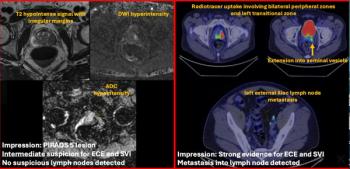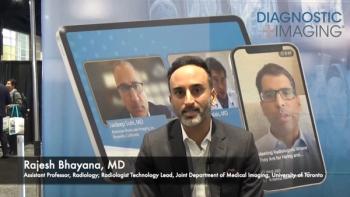
Technique easily integrates foreign images into local PACS
The Integrating the Healthcare Enterprise initiative’s portable data for imaging profile has helped the radiology department at Groningen University Hospital in the Netherlands develop a method for easily integrating data from outside hospitals into their own PACS, according to a recent study.
The Integrating the Healthcare Enterprise initiative's portable data for imaging profile has helped the radiology department at Groningen University Hospital in the Netherlands develop a method for easily integrating data from outside hospitals into their own PACS, according to a recent study.
Patient data, including digital images, are increasingly transferred between healthcare entities on a CD, presenting problems for local PACS and receiving clinicians.
Most hospitals have unique patient ID conventions, making the interchange of data difficult, Clinicians often find their viewers can't read the CD and local systems don't allow installation of incorporated viewing software, or they simply don't know how to use the viewing software.
A recent Dutch study investigates the application of a new technique to integrate out-hospital data into local PACS (J Digit Imaging 2005 Jun 2;[Epub ahead of print]).
"This new feature provides a familiar user interface, allowing easy access of CD-R data by all physicians in the hospital. It allows easy second opinion reporting, following standard working procedures by our radiologists," said Peter van Ooijen, Ph.D., of the radiology department at Groningen.
Van Ooijen's technique benefits from the IHE initiative, which defines a portable data for imaging profile that addresses the standardization needed for portable data exchange.
The profile specifies that the portable media importer imports and reconciles the DICOM portion of the media content into the local information system.
Van Ooijen employed a commercially available software package (DICOM LiteBox, ETIAM, France) that allows reconciliation of patient data with the information in the DICOM modality work list.
To achieve integration, the patient must be known to a hospital information system, and a new examination must be defined in the radiology information system. Reconciliation is then performed according to the IHE specifications automatically by using the DICOM modality work list, van Ooijen said.
Thus, during transfer to PACS, institution-dependent information like patient numbers is replaced.
"Basically, the same procedure can be followed by each site operating a PACS," he said.
One disadvantage is the large amount of additional images to be stored on local PACS.
"To prohibit inclusion of unnecessary images, the physician has to complete a request form defining reasons to include the patient into PACS and pay a fee for radiology services provided," van Ooijen said.
The majority of requests are processed as second opinions, meaning a radiologist report is required and corresponding fees apply.
Newsletter
Stay at the forefront of radiology with the Diagnostic Imaging newsletter, delivering the latest news, clinical insights, and imaging advancements for today’s radiologists.




























